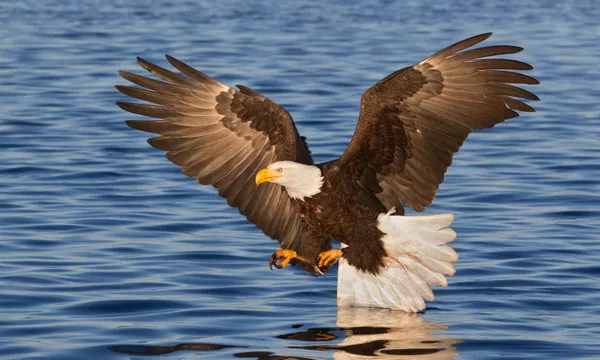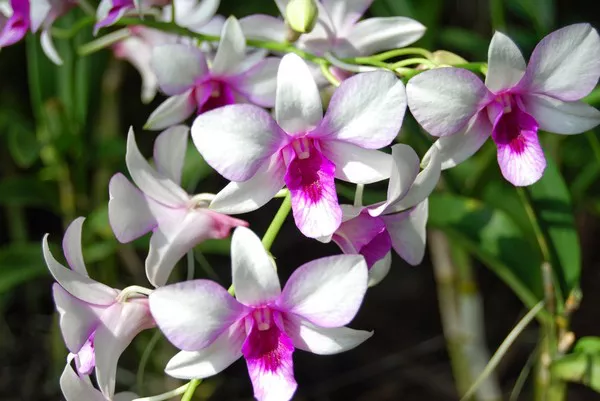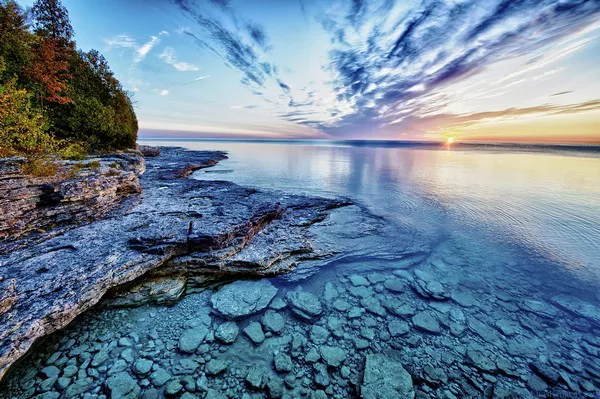Eagles, with their majestic flight and keen eyesight, symbolize power, freedom, and resilience. Found across diverse habitats around the globe, these birds of prey inspire awe and admiration. However, some eagle species are rarer than others, facing threats ranging from habitat loss and degradation to poaching and climate change. In this comprehensive guide, we delve into the rarest eagles in the world, exploring their characteristics, habitats, and the conservation efforts aimed at protecting them.
Top 10 Rarest Eagles in the World
1. Philippine Eagle (Pithecophaga jefferyi)
The Philippine eagle, also known as the monkey-eating eagle, is one of the rarest and most endangered eagles in the world. Endemic to the Philippines, this magnificent bird is known for its striking appearance, with a distinctive crest of feathers atop its head and piercing blue eyes.
Adult Philippine eagles have a wingspan of up to seven feet and can weigh up to 20 pounds, making them one of the largest eagle species in the world. They are apex predators, feeding primarily on monkeys, flying lemurs, and other small mammals found in the dense forests of the Philippines.
Habitat loss due to deforestation, as well as hunting and poaching, have led to a drastic decline in Philippine eagle populations. Conservation efforts, including habitat protection, captive breeding programs, and community education initiatives, are underway to save this critically endangered species from extinction.
See Also: 10 Rarest Mammals in the UK
2. Harpy Eagle (Harpia harpyja)
The harpy eagle is one of the largest and most powerful eagles in the world, known for its impressive size and formidable talons. Found in the rainforests of Central and South America, this majestic bird is a top predator, feeding on a variety of prey including monkeys, sloths, and large birds.
Adult harpy eagles have a wingspan of up to seven feet and can weigh up to 20 pounds, with females typically larger than males. They are characterized by their distinctive crest of feathers and piercing yellow eyes, which give them a fierce and imposing appearance.
Habitat loss and fragmentation, as well as poaching and hunting, pose serious threats to harpy eagle populations. Conservation efforts, including protected area management, anti-poaching patrols, and public education campaigns, are helping to safeguard this iconic species and its rainforest habitat.
3. Steller’s Sea Eagle (Haliaeetus pelagicus)
Steller’s sea eagle is one of the largest and most impressive eagles in the world, with a wingspan of up to eight feet and a powerful beak and talons adapted for catching fish. Found in coastal regions of northeastern Asia, this magnificent bird is a symbol of the wild and rugged landscapes of the Russian Far East.
Adult Steller’s sea eagles are characterized by their striking black and white plumage, with a distinctive white tail and bright yellow beak and feet. They are skilled hunters, feeding primarily on fish, seabirds, and small mammals found along the shores and estuaries of their coastal habitat.
Habitat degradation due to logging, pollution, and disturbance, as well as overfishing and depletion of prey species, threaten Steller’s sea eagle populations. Conservation efforts, including habitat restoration, marine protected areas, and research and monitoring programs, are critical for the long-term survival of this endangered species.
4. Philippine Serpent Eagle (Spilornis holospilus)
The Philippine serpent eagle is a rare and elusive raptor found only in the forests of the Philippines. Known for its agility and stealth, this small eagle specializes in hunting snakes and other reptiles, using its sharp talons and powerful beak to capture and subdue its prey.
Adult Philippine serpent eagles have a wingspan of up to four feet and a distinctive pattern of brown and white feathers that help them blend into their forest habitat. They are skilled hunters, using their keen eyesight and agility to locate and ambush prey from perches high in the canopy.
Habitat loss and fragmentation, as well as hunting and trapping for the illegal wildlife trade, pose serious threats to Philippine serpent eagle populations. Conservation efforts, including habitat protection, law enforcement, and community-based conservation initiatives, are crucial for the survival of this endangered species.
5. Madagascar Fish Eagle (Haliaeetus vociferoides)
The Madagascar fish eagle is one of the rarest and most endangered eagles in the world, with a population of fewer than 500 individuals remaining in the wild. Endemic to the island of Madagascar, this majestic bird is known for its distinctive call and impressive hunting skills.
Adult Madagascar fish eagles have a wingspan of up to six feet and a striking black and white plumage that sets them apart from other eagle species. They are skilled hunters, feeding primarily on fish, frogs, and other aquatic prey found in the rivers and lakes of Madagascar’s wetlands.
Habitat loss due to deforestation, as well as pollution and disturbance of freshwater habitats, pose serious threats to Madagascar fish eagle populations. Conservation efforts, including habitat restoration, captive breeding programs, and community-based conservation initiatives, are underway to save this critically endangered species from extinction.
6. Javan Hawk-Eagle (Nisaetus bartelsi)
The Javan hawk-eagle is a rare and elusive raptor found only on the island of Java in Indonesia. Known for its striking appearance and powerful hunting abilities, this majestic bird is a symbol of the island’s rich biodiversity and cultural heritage.
Adult Javan hawk-eagles have a wingspan of up to four feet and a distinctive pattern of black and white feathers that help them blend into their forest habitat. They are skilled hunters, feeding primarily on birds, small mammals, and reptiles found in the dense jungles of Java.
Habitat loss and fragmentation due to deforestation, as well as hunting and trapping for the illegal wildlife trade, pose serious threats to Javan hawk-eagle populations. Conservation efforts, including habitat protection, law enforcement, and community-based conservation initiatives, are critical for the survival of this endangered species.
7. Madagascar Serpent Eagle (Eutriorchis astur)
The Madagascar serpent eagle is a rare and enigmatic raptor found only on the island of Madagascar. Known for its distinctive appearance and hunting behavior, this small eagle is a top predator in Madagascar’s forest ecosystems.
Adult Madagascar serpent eagles have a wingspan of up to three feet and a striking pattern of brown and white feathers that help them blend into their forest habitat. They are skilled hunters, specializing in hunting snakes and other reptiles found in the dense undergrowth of Madagascar’s forests.
Habitat loss and fragmentation, as well as hunting and trapping for the illegal wildlife trade, pose serious threats to Madagascar serpent eagle populations. Deforestation, driven by agriculture, logging, and charcoal production, has resulted in the loss of much of the eagle’s natural habitat. Additionally, the capture of eagles for use in traditional medicine and as pets has further contributed to population declines.
Conservation efforts aimed at protecting the remaining forest habitats of Madagascar, including national parks and reserves, are crucial for the survival of the Madagascar serpent eagle. Initiatives focused on community-based conservation, environmental education, and sustainable land use practices are also essential for ensuring the long-term viability of this endangered species.
8. White-Tailed Eagle (Haliaeetus albicilla)
The white-tailed eagle, also known as the sea eagle, is one of the largest birds of prey in the world, with a wingspan of up to eight feet. Found in coastal regions of Europe and Asia, this majestic bird is known for its impressive size and powerful hunting abilities.
Adult white-tailed eagles have a distinctive white tail and head, with dark brown plumage on their bodies and wings. They are skilled hunters, feeding primarily on fish, waterfowl, and carrion found along the shores and estuaries of their coastal habitat.
Habitat loss and degradation, as well as pollution and disturbance of freshwater habitats, pose serious threats to white-tailed eagle populations. Conservation efforts, including habitat restoration, protected area management, and anti-poaching patrols, are helping to safeguard this iconic species and its coastal habitat.
9. Verreaux’s Eagle (Aquila verreauxii)
Verreaux’s eagle, also known as the black eagle, is a rare and elusive raptor found in mountainous regions of sub-Saharan Africa. Known for its striking appearance and powerful hunting abilities, this majestic bird is a symbol of the continent’s wild and rugged landscapes.
Adult Verreaux’s eagles have a wingspan of up to six feet and a distinctive black plumage with white markings on their chest and legs. They are skilled hunters, feeding primarily on rock hyraxes, small mammals, and birds found in the rocky cliffs and escarpments of their mountain habitat.
Habitat loss and fragmentation due to deforestation, as well as hunting and persecution by humans, pose serious threats to Verreaux’s eagle populations. Conservation efforts, including habitat protection, research and monitoring programs, and community-based conservation initiatives, are critical for the survival of this endangered species.
10. Flores Hawk-Eagle (Nisaetus floris)
The Flores hawk-eagle is a rare and enigmatic raptor found only on the island of Flores in Indonesia. Known for its distinctive appearance and hunting behavior, this small eagle is a top predator in the island’s forest ecosystems.
Adult Flores hawk-eagles have a wingspan of up to three feet and a striking pattern of black and white feathers that help them blend into their forest habitat. They are skilled hunters, feeding primarily on birds, small mammals, and reptiles found in the dense jungles of Flores.
Habitat loss and fragmentation due to deforestation, as well as hunting and trapping for the illegal wildlife trade, pose serious threats to Flores hawk-eagle populations. Conservation efforts, including habitat protection, law enforcement, and community-based conservation initiatives, are critical for the survival of this endangered species.
See Also: 10 Rarest Marine Animals in the World
Conclusion
The rarest eagles in the world are not only magnificent creatures but also vital components of their ecosystems. From the dense forests of the Philippines to the rugged mountains of Africa, these majestic birds of prey play crucial roles in maintaining the balance of nature. However, they are facing unprecedented challenges, including habitat loss, poaching, and climate change, which threaten their survival.
Conservation efforts aimed at protecting the rarest eagles are crucial for ensuring their continued existence. By addressing the root causes of their decline, including habitat destruction and illegal wildlife trade, we can help safeguard these iconic species for future generations to admire and cherish. Through education, research, and community involvement, we can work together to protect and preserve the rarest eagles and the habitats they call home.
You Might Be Interested In:



























